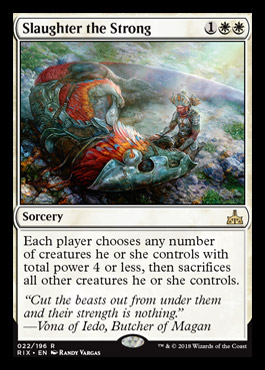
Data for the earliest years of the format are hard to verify with precision, as the internet, and the game, was still in its infancy.

When only one date is listed, it is for paper magic (not Magic Online or Arena). Where verifiable, effective dates of legality are listed (as opposed to release or announcement dates.). Below is a timeline of different Standard environments throughout the format's history. For most of the format's history, set rotation was a distinctive element: new card sets get added to the list of allowed sets, until eventually the older sets on the list are removed from the list, or "rotate out" of the format. Since it was initially announced, the way that card legality is determined, and the way cards rotate in and out of the format has gone through many changes. Today, it is one of the most common formats used for large official tournaments. The rotating constructed format known today as Standard (originally called "Type 2") was first announced on January 10, 1995, inheriting banned and restricted lists from another format, called Vintage. These official tournaments created an incentive for players to continue to buy cards for new sets, and helped establish a long-term future for the game. Another major development was the creation of officially sanctioned tournaments for prize money. Constructed formats, for instance, allow players to build decks in advance using cards from their collection, although only a subset of cards are allowed. The game evolved over time to encompass many different formats with various constraints for how players could construct their decks. We’ll have to wait and see what the function of the new tokens will be and if it can live up to the legacy.The collectible card game Magic: The Gathering was first released in 1993 with very few restrictions on how players could construct their decks (which cards to include, and how many copies of each card were allowed). Regardless of what the token actually does, these artifact tokens are popular among players and have become an important part of Standard and other formats, too. There’s no end to the kinds of things that an artifact could theoretically do: Food tokens gain life, perhaps there could be a token that does burn damage? Maybe there could be some kind of equipment token? A commenter on Reddit suggested it could maybe have a life drain effect (opponent loses 1 life, you gain 1 life). Now, we’ve learned that Crimson Vow will apparently include cards that create a new type of artifact token along the same lines. Treasure tokens have been popping up in many recent sets, especially Adventures in the Forgotten Realms, and Innistrad: Midnight Hunt just recently saw the return of Clue tokens to the Standard format. Throne of Eldraine brought with it Food tokens, the newest of the bunch.

Wizards of the Coast’s design team has been leaning pretty heavily into artifact tokens over the last few years. If there is going to be one or more cards that can remove emblems, it will be interesting to see how Wizards of the Coast balances the niche ability. Planeswalkers often have to gain a significant amount of loyalty before they can create an emblem with their “ultimate” ability, something that’s known to be quite difficult in a game of Magic.

It’s certainly possible that emblems are what Mark Rosewater was hinting at here, so perhaps that’s about to change.

One possibility that jumps to mind is emblems, which are usually created by planeswalkers such as Wrenn and Seven.Įmblems are well-known as a card type that cannot currently be interacted with by any means in the game once they have been created. One of Rosewater’s bullet points says that there will be a new mechanic that “removes something never removed before.” Players on Reddit joked that we’ll finally be able to “remove target player from the game,” but what Rosewater is actually referring to is somewhat unclear. Removing Something That’s Never Been Removed Before?


 0 kommentar(er)
0 kommentar(er)
